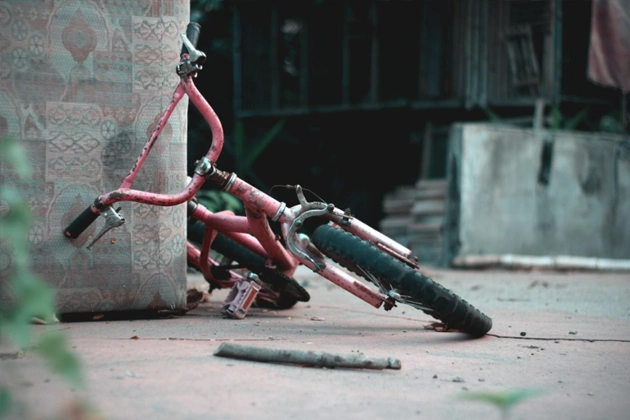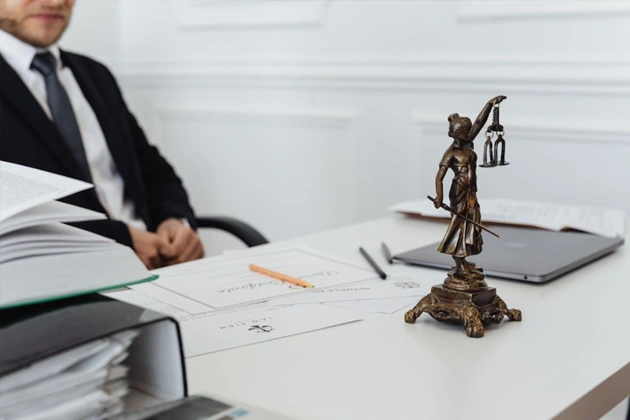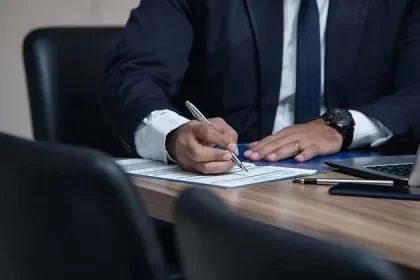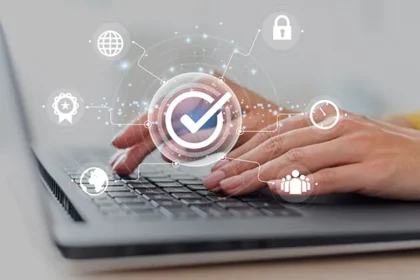You’re about to discover essential insights into Florida’s laws on bicycle accidents that could dramatically influence your cycling experience. As a cyclist, comprehending your rights and obligations on the road is paramount. From traffic regulations to insurance claims, these laws are designed to safeguard you in the event of an accident. So, if you want to ascertain you’re prepared and know precisely what steps to take after an incident, keep going.
Understanding Bicycle Rights and Responsibilities in Florida
Although traversing Florida’s roads on a bicycle can be formidable, understanding your rights and responsibilities is indispensable for safety and legal compliance. You have the same rights as motorists, which means you can take up a full lane when necessary for safety. Be mindful of your responsibility to obey traffic signals and signs, just like any other vehicle on the road. Always signal your turns clearly to communicate effectively with other road users. Remember, visibility is paramount, so use lights and reflective gear, especially at night or in low-light conditions. It’s also your duty to remain alert and aware of your surroundings. By staying informed and proactive, you guarantee not only your safety but also contribute to the overall harmony of traffic flow.
Key Regulations for Cyclists on Florida Roads
When you’re cycling on Florida roads, knowing helmet and equipment requirements is vital for your safety. You’re also expected to follow specific rules regarding bicycle lane usage to guarantee a smooth ride. Let’s explore these key regulations to help you stay safe and compliant.
Helmet and Equipment Requirements
Even if you’re an experienced cyclist, understanding Florida’s helmet and equipment regulations is essential for your safety and compliance with the law. Florida law requires that all cyclists under the age of 16 wear a properly fitted helmet. While older cyclists aren’t mandated by law to wear helmets, it’s highly recommended for your safety.
For equipment, your bicycle must have a white front light visible from 500 feet and a red rear reflector or light visible from 600 feet if you’re riding between sunset and sunrise. Your bike should also have working brakes that can stop it within 25 feet from a speed of 10 mph. Ensuring your bike’s equipment meets these standards keeps you safer and within legal requirements.
Bicycle Lane Usage Rules
Understanding the rules for bicycle lane usage is essential for safe and lawful riding on Florida roads. As a cyclist, you must use designated bike lanes whenever they’re available. Florida law mandates riding as close as practicable to the right-hand curb or edge of the roadway, except when overtaking another cyclist, avoiding hazards, or preparing for a left turn. If no bike lane exists, you’re allowed to ride on the road, but always stay alert to traffic. Remember, vehicles should maintain a safe distance, but you must also guarantee you’re visible and predictable. Don’t forget, riding against traffic is illegal and unsafe. Following these rules not only keeps you within the law but also enhances your safety on the road.
Florida’s Helmet Laws and Safety Requirements
Although cycling offers numerous benefits, it’s crucial to understand Florida’s helmet laws and safety requirements to guarantee your protection. In Florida, riders under 16 must wear a helmet that meets federal safety standards. Make sure the helmet fits snugly and covers your forehead. Helmets can drastically reduce the risk of head injuries, so it’s a smart move for everyone, regardless of age.
Besides wearing a helmet, use lights and reflectors, especially when cycling at night. Florida law requires a white light on the front and a red light or reflector on the rear. Ensuring your bike is well-maintained and equipped with a bell or horn enhances safety. By adhering to these guidelines, you’re not only following the law but also considerably increasing your safety on the road.
How Florida Law Defines a Bicycle Accident
When traversing Florida’s roads, it is pivotal to understand how the law defines a bicycle accident to guarantee you manage any incidents appropriately. Under Florida law, a bicycle accident involves any collision or incident between a bicycle and another vehicle, pedestrian, or object that causes injury, death, or property damage. This definition covers a range of scenarios, including when a cyclist strikes a parked car or an open car door, or when a vehicle hits a cyclist. It is critical to recognize that Florida treats a bicycle as a vehicle, granting cyclists similar rights and responsibilities as motorists. Consequently, any violation of traffic laws that results in an accident is considered a bicycle accident under Florida statutes.
Reporting and Documenting Bicycle Accidents
When you’re involved in a bicycle accident in Florida, it’s vital to know the essential steps for reporting the incident properly. Make sure you gather and document key evidence, such as photos of the scene and contact information of witnesses, to support your case. This preparation can help guarantee a smoother process when dealing with authorities and insurance companies.
Essential Reporting Steps
After a bicycle accident, promptly reporting and documenting the incident is essential for ensuring your rights are protected. First, contact the local police to report the accident. They’ll create an official report which could be pivotal for insurance claims or legal actions. Make sure to get the officer’s name and badge number for future reference. Notify your insurance company about the accident as soon as possible; they’ll guide you through the necessary steps for filing a claim. If there are any witnesses, collect their contact information. This can be invaluable later. Don’t forget to make a personal record of the accident details while they’re fresh in your mind. By taking these steps, you’re proactively safeguarding your interests.
Documenting Crucial Evidence
How can you effectively document essential evidence following a bicycle accident? Start by taking clear photos of the accident scene from multiple angles. Capture any damages to your bike, the other vehicle, and the surrounding area. Don’t forget to photograph visible injuries. Next, gather contact information from witnesses and those involved. Note down details like names, phone numbers, and email addresses. Additionally, jot down the accident’s date, time, and location. Record weather conditions and any relevant road signs. It’s pivotal to maintain any damaged clothing or gear as evidence. Use your phone to record any conversations you have with witnesses or the other party, if possible. Your detailed documentation can greatly strengthen your case if legal action becomes necessary.
Determining Fault and Liability in Bicycle Accidents
In many bicycle accidents, determining fault and liability becomes essential for both parties involved. You’ll need to carefully assess the situation to understand who’s responsible. Florida follows a “comparative negligence” rule, meaning fault can be shared between parties. Here are key factors in determining fault:
- Traffic Laws: Consider whether either party violated road rules, like running a stop sign or failing to yield.
- Evidence: Gather photos, witness statements, and police reports to support your case.
- Road Conditions: Check if poor maintenance or signage contributed to the accident.
- Behavior: Evaluate whether distractions or impaired driving played a role.
Understanding these elements can help clarify liability and guide you through the legal process, ensuring a fair outcome for everyone involved.
Insurance Coverage and Claims for Cyclists
While traversing the aftermath of a bicycle accident, comprehending insurance coverage and how to file claims becomes vital. In Florida, cyclists often rely on their auto insurance’s Personal Injury Protection (PIP) to cover medical expenses and lost wages. If you’re injured, check if your policy includes PIP, as it typically covers up to 80% of medical costs. If you don’t have auto insurance, you might need to explore the at-fault driver’s coverage. Filing a claim involves contacting the insurance company promptly, providing accident details, and submitting relevant documentation. Keep records of medical treatments and repair estimates. Remember, insurance companies might not always offer fair compensation initially, so be prepared to negotiate or seek professional assistance to guarantee you’re adequately covered.
Legal Steps to Take After a Bicycle Accident
After a bicycle accident, taking the right legal steps can make all the difference in securing your rights and potential compensation. First, safeguard your safety and seek medical attention if needed. Once you’re safe, collect as much information as possible at the scene.
- Call the police: A police report is vital for documentation.
- Gather evidence: Take photos of the accident scene, your bicycle, and any injuries.
- Exchange information: Get the contact details and insurance information from the other party involved.
- Speak to witnesses: Collect names and contact numbers of any witnesses.
Consult a personal injury attorney to understand your rights and explore potential claims. Acting promptly preserves evidence and strengthens your case. For additional support, seeking legal protection after a bicycle accident can ensure you have the guidance needed to navigate the claims process effectively.
Resources and Support for Injured Cyclists in Florida
Once you’ve taken the necessary legal steps, finding the right resources and support becomes crucial in your recovery journey. Start by reaching out to local cycling clubs and online forums. They often offer advice, share experiences, and connect you with others who’ve faced similar challenges. Consider contacting the Florida Bicycle Association, which advocates for cyclist safety and may provide guidance on rehabilitation resources.
Don’t overlook medical professionals specializing in post-accident recovery. Physical therapists and chiropractors can tailor treatment plans to your needs. Legal aid services may also assist if you need ongoing legal advice or support. Finally, look into mental health resources. Coping with the aftermath of an accident often requires emotional support, so don’t hesitate to seek counseling or therapy.











